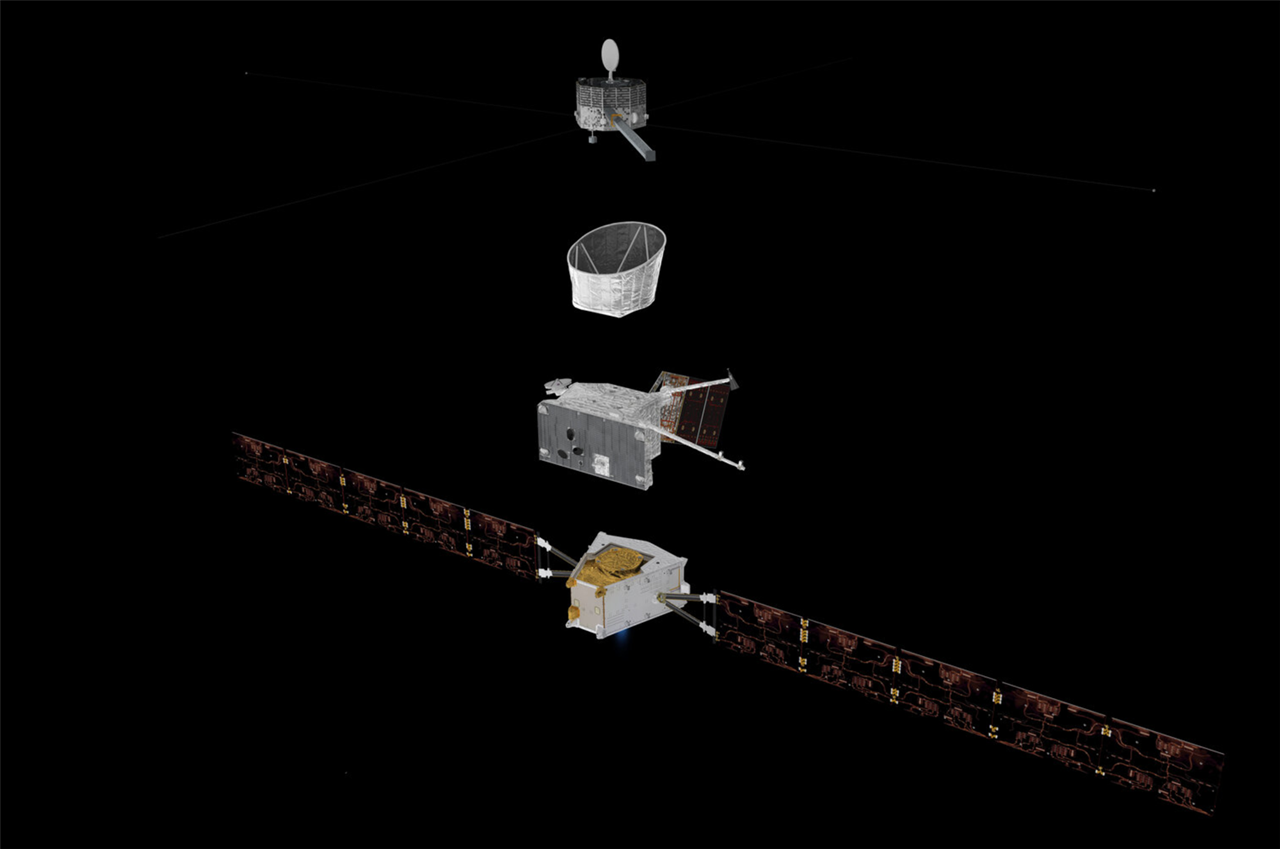
The Mercury probe BepiColombo, jointly operated by the European Space Agency (ESA) and the Japan Aerospace Exploration Agency (JAXA), recently received bad news: the probe's propulsion system was unable to meet its mission due to an unknown failure. load operation.
BepiColombo was launched from a base in French Guiana aboard an Ariane 5 rocket on October 20, 2018, and is scheduled to enter orbit around Mercury in December 2025 for observation (the probe has flown past Mercury but has not Not in orbit yet, because the orbital altitude still needs to be lowered)
Due to the need for a smaller orbit, the probe needs to make a total of nine flybys of Mercury. Once it enters the target orbit, it can analyze various surprising things about Mercury, including Mercury's very high surface temperature (Mercury's daytime equatorial region can reach 432°C), water ice material in polar craters, Mercury’s very weak magnetic field and the apparent voids in Mercury.
According to news released by the European Space Agency, the BepiColombo probe made its fourth flyby of Mercury on April 26, 2024, but engineers found problems with the probe's propulsion system, which prevented it from operating at full capacity.
BepiColombo's propulsion system, called the Mercury Transfer Module, is mainly composed of solar panels and a propulsion system used to generate electricity. When BepiColombo attempted to maneuver on April 26, the Mercury Transfer Module failed Provide sufficient power to the thrusters.
After discovering the fault, the engineering team started to repair it. The good news was that part of the power supply to the thruster was restored, allowing the thruster to reach 90% of full load. The bad news was that it was still unable to operate at full load, which meant that the detector was not fully propelled. continue flying.
The inability to operate at full capacity means that the maneuvering and flight speed of the detector may be affected. If it cannot be repaired in time, all subsequent flight plans may be affected.
The ESA engineering team is still investigating the cause of the problem. The priority task at this stage is to stabilize the thrust at the current sub-optimal stage, which is 90%. Research is also underway on how to handle future maneuvers at less than full propulsion.
ESA will release more information in a timely manner as new information becomes available. However, the lack of thrust should not affect the final detection plan, but the engineering and science teams may need to spend more time re-formulating the plan.
Copyright Statement: Thank you for reading. Unless the source website name or link is indicated in the article, it is the original content of Blue Dot.com.When reprinting, please be sure to indicate: Source: bluedot.com, author andFull link to this article,Thank you for understanding.





GIPHY App Key not set. Please check settings